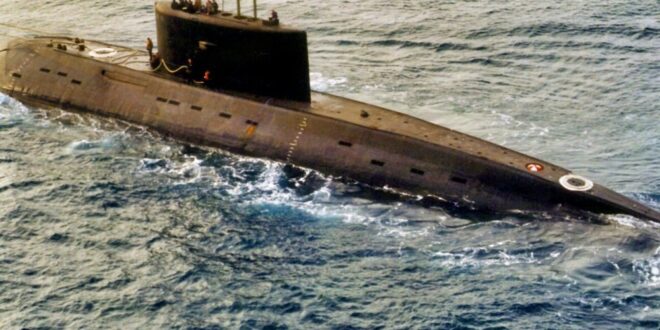Harrison Kass
China’s Submarines – A Clear Threat to the U.S. Navy? China is quickly becoming the most meaningful rival to the United States. And while the US enjoys circumstances (i.e., providential geography, i.e., the world’s most robust military budget) that ensure relative safety, China’s latent potential and ambitious posturing have caught the attention of US war planners. Accordingly, particular attention is being paid to Chinese military capabilities.
China’s population is aging – but with a population in excess of 1.4 billion, China is uniquely positioned to field sizeable military forces. And China is currently working to augment the capabilities of their uniquely sizeable military forces.
With respect to the air force, China is relying on a combination of collaboration (import and licensure from the Russians), industrial espionage (from the Americans), and domestic development to create aircraft capable of rivaling America’s fifth-generation fighters.
Similarly, China is currently engaged in one of human history’s greatest shipbuilding sprees. The Chinese navy’s fleet size has recently surpassed the US – giving China the world’s largest navy.
And while the US still maintains an advantage over the Chinese with respect to naval fleet quality, the Chinese shipbuilding spree has put the entire Indo-Pacific region on notice.
And naturally, observers are concerned not just with what the Chinese are putting to sea, but with what the Chinese are putting beneath the sea – that mean submarines.
Assessing the Chinese Sub Threat
Submarines hold a special place in the public’s imagination.
Sinister, even by the standards of a war machine, submarines conjure fear and uncertainty. It makes sense – submarines lurk beneath the surface of the ocean, unseen, striking surgically and at-will, the military equivalent of a shark.
The US, in particular, seems preoccupied with the submarines of their enemy. Nazi U-boat “wolfpacks” terrorized the Atlantic during World War II. Soviet submarines, loaded with nuclear missiles, brought the threat of annihilation, perhaps, as close as our shoreline. N
ow, China has developed the world’s largest navy – and while the naval threat has not quite vested in the way the Nazi or Soviet threat had vested, a wary eye has been trained on China’s submarine fleet.
China’s Submarine Fleet: A Threat to the U.S. Navy?
Currently, China’s People’s Liberation Army Navy Submarine Force (PLANSF) operates a fleet of 56 submarines.
China “possesses both a nuclear-powered submarine fleet and a robust diesel-electric submarine fleet,” the Nuclear Threat Initiative explains. “While the PLAN is currently developing its nuclear-powered submarine capabilities, its diesel-electric submarine fleet remains the backbone of China’s submarine forces. While its growth is declining, United States government reports indicate the fleet could grow to between 65 and 70 submarines by 2020s.”
Of particular concern are China’s six Type 094 ballistic missile submarines (SSBNs) and six Type 093 nuclear-powered attack submarines (SSNs).
The Type 094
Satellites first documented the Type 094 Jin-class ballistic missile submarine in late 2006. By 2007, the Type 094 was first commissioned, and today, six are in service making regular nuclear deterrence patrols. The Type 094 is generally regarded as China’s first sea-based nuclear deterrent. Initially, the Type 094 was armed with 12 JL-2 SLBMs, each missile with one warhead, with a range extending to 4,500 miles (meaning that parts of Alaska were within range if the submarine were parked off the shore of China).
In 2022, however, the JL-2s were switched out in favor of JL-3s, which had a range of up to 6,200 miles (meaning that the Type 094 could target the continental US from the South China Sea). Still, despite the respectable abilities of the Type 094’s weapons, the submarine is a flawed platform – most notably with respect to its noise signature. The Type 094 is noisier than its peer submarines, with an acoustic signature of 120 decibels.
Actually, the Type 094 is noisier than Soviet/Russian SSBNs that were built in the 1970s, almost half a century ago.
The Type 093 Submarine
The PLANSF also operates six nuclear-powered attack submarines, the Type 093 Shang-class. The first Type 093 was laid down in 1994 at the Bohai Shipyard but not commissioned until 2006 thanks to significant technical difficulties.
And while the Type 093 submarine class represents a big step forward in China’s underwater sub warfare capability, the sub is not as capable or advanced as the latest Western attack submarines like the new Virginia-class boats.
The Type 093 is armed with six 533mm torpedo tubes that can be used to launch anti-submarine or anti-ship torpedoes with either wire, acoustic, or wave-homing devices.
China’s Submarine Fleet: Looking ahead
The current crop of Chinese submarines are worrisome – despite not being technological peers of their Western contemporaries.
Still, the main concern, perhaps is not what the Chinese fields currently, but what the Chinese can field in the future.
At present, China is developing the Type 095 nuclear attack submarine (which is expected to have a reduced acoustic signature and improved hull design) and the Type 096 ballistic missile submarine (which will begin construction in the next decade and will be armed with the JL-3s).
About the Author
Harrison Kass is a prolific defense writer with over 1,000 published pieces. An attorney, pilot, guitarist, and minor pro hockey player, Harrison joined the US Air Force as a Pilot Trainee but was medically discharged. Harrison holds a BA from Lake Forest College, a JD from the University of Oregon, and an MA from New York University. Harrison listens to Dokken.
 Geostrategic Media Political Commentary, Analysis, Security, Defense
Geostrategic Media Political Commentary, Analysis, Security, Defense





